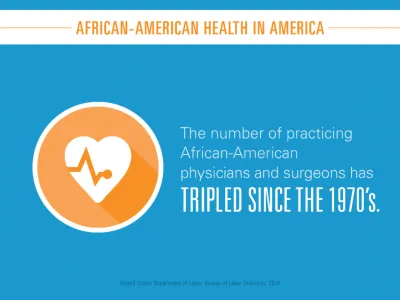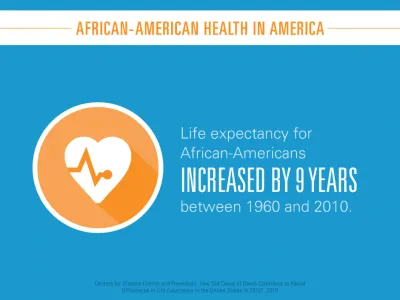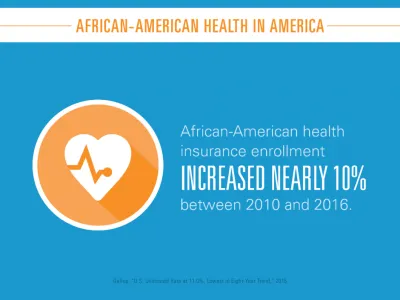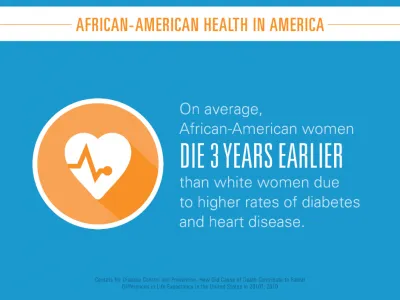Signs of progress in improving African-Americans’ health

For decades, the story of African-American health has been defined by inequalities. Segregation, institutional racism and a lack of access to quality care led to stark differences between Blacks and whites on nearly every marker of health. “Of all the forms of inequality, injustice in health care is the most shocking and inhumane,” Dr. Martin Luther King, Jr. said in a 1966 address to the Medical Committee for Human Rights.
But some hopeful new statistics indicate this is changing.
The infant mortality rate among African-Americans has dropped by more than 20% since the late 1990s, according to the National Center for Health Statistics. The African-American teen birth rate plummeted over the past two decades. Rates of cancer deaths have dropped dramatically. The number of African-American medical school students increased nearly eight-fold between 1968 and 2011. And African-American women defied the national trend of declining life expectancy.
Yet, despite these gains, African-American men and women still face considerable health disparities when compared with whites. They are more likely to suffer from cardiovascular disease, including stroke and high blood pressure, according to the Centers for Disease Control and Prevention (CDC). Two out of five African-American adults suffer from high blood pressure, and fewer than half have the condition treated, according to the CDC. Rates of HIV and hepatitis C are higher in the black community.
And African-Americans are more likely to die of certain cancers than whites, such as breast, lung and colon cancers. For example, nationally, Black women are 41 percent more likely to die from breast cancer than their counterparts. In Los Angeles, the disparity is greater: black women are 71 percent more likely to die from breast cancer.
Across the country, programs to address these health challenges with the goal of closing the health and well-being gap are growing. For example, Blue Cross Blue Shield of Massachusetts led an effort to address racial disparities in health by providing funding for 11 community-based coalitions to address disproportionate rates of obesity, diabetes, teen pregnancy and other issues. The program led to a host of recommendations for providers and funders seeking to create similar efforts, such as convening groups of community leaders and patients to help set goals and guide planning.
To address dramatically higher rates of breast cancer deaths among black women, compared with whites, the Anthem Blue Cross Foundation teamed up with Susan G. Komen of California in a two-year initiative to encourage African-American women to get mammograms, learn about risk factors and openly discuss breast cancer. To date, more than 52,000 African-American women have received local breast health information and nearly 2,600 have completed a mammogram.
“Research shows that African-American women have a lower incidence of breast cancer but face higher mortality rates from this insidious disease,” said Pam Kehaly, President of Anthem’s West Region and Specialty Business. “We hope to not only help screen more African American women for breast cancer but to also get them the information they need after an abnormal mammogram test to help narrow this gap.”
Community-based programs like these – are making an impact. The key has been a determined effort by healthcare organizations, medical professionals and insurers to increase their own awareness of racial disparities—and design interventions that can make real progress toward overcoming them.




